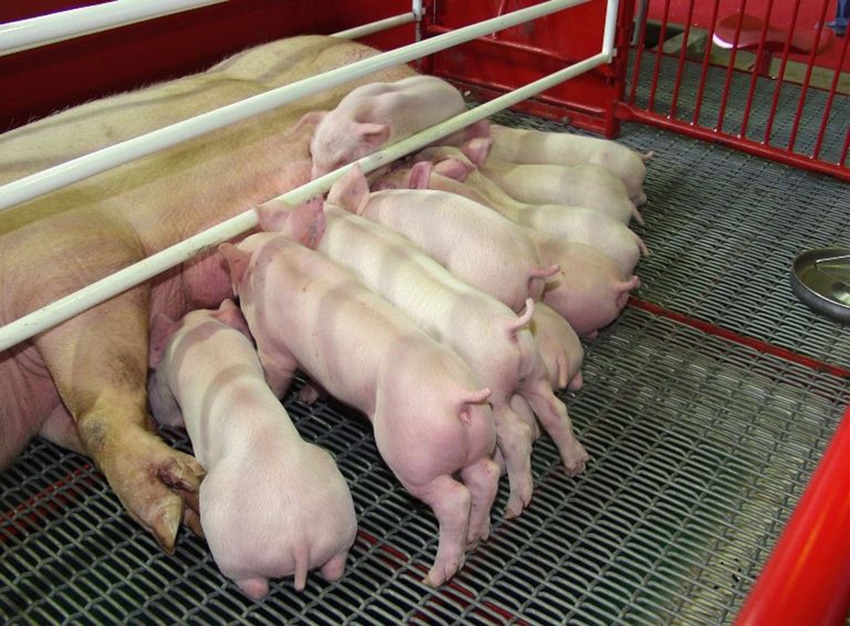After the Hogs and Pigs Report bomb — now what?
Time to take stock of your marketing tactics in the wake of the new information.
July 9, 2018

Steve Meyer did a great job last week articulating the numbers represented in the June Hogs and Pigs Report. Perhaps it is time to discern the “now what?” in the wake of the report.
There is no way to sugar-coat the data, pig supplies will be plentiful for the foreseeable future. The breeding herd was the big surprise at 103.5% of last year, a whopping 1.8% higher than analysts’ guesses coming into the report. The weight category breakdown did not reveal a “PRRS hole” that had been posited as a potential rallying point. Trying to find a sliver of hope in the report was, frankly, difficult.
Prices responded largely as expected on the Friday after the report with the distant months under the most pressure before recovering some of the losses over the next few trading sessions. Let’s talk about what this report is and what it is not. First, we are not on the cusp of repeating 1998. The increased packing capacity will absorb the animals, we just may not like the price. Two decades ago, we flooded the market with hogs relative to shackle space and overwhelmed the system.
Second, we will likely have to keep prices low enough, long enough to clear product. That means red ink for nearly everyone on the production side of the hog market and we should probably be taking steps now with diet formulation, projected marketing weights, etc., to prepare for the difficulty.
Lastly, we probably should shift to the new reality of 2019. We have had a pretty good run of profitability in the pork production industry, we may have to lower our expectations and button up for a bit to get past this trade situation combined with big supplies. Our work would indicate that — even at today’s levels — the futures market represents “good” values for the coming year, even if they are numbers lower than what we would like to see.
Bright spots?
Well, exports have been good so far this year, up roughly 8% for the first half of the year. If we can simply hold serve and remain flat on a year-over-year basis for the balance of 2018, we would post record exports for the year during a time that desperately needs the product to move. Weekly exports sales (booked, not shipped) are down about 2% relative to this time last year and the impact of the trade war is probably not fully realized in the forward curve for the last half of the year.
Input prices have moderated in the past few months. This is a sword that cuts both ways. Beans have fallen roughly $2 per bushel and soybean meal is off $70 per ton from its highs. This has helped ease the pain a bit for the pork producer. Corn is trading at a 40-cent discount to where it “should” if you look at historical references. We have, essentially, taken all the risk premium out of the corn market as we enter the throes of pollination. Strange.
Do we have tariff fatigue? On Friday after the Fourth of July holiday, the much-ballyhooed Trump tariffs on Chinese goods kicked in at midnight. In a swift response, China implemented their own promised tariffs on U.S. beans. The bean market responded by appreciating nearly 40 cents per bushel by the close of trade. I understand that a rally in the soy complex may not be the best fit for my Bright Spots header, but it makes you wonder what would happen to the pork market if we actually had a reprieve of the onslaught of bad news?
Variety meat exports to China do not seem to be materially impacted, yet. I have to use that soft language because of the freshness of the new stimuli has not been fully realized. To me, this may be the most important piece of the Chinese tariffs as it relates to pork. We were not going to send much in the way of muscle cuts, anyway, to China. My best estimate is variety meats to China represent roughly $6 per head premium to the next-best market for those products, likely rendering. Watch this one closely.
Shipments of hams to Mexico have not been materially impacted by the 10% tariff. It is too early to assess the impact that the increase to 20% (July 6) will be too much for the market to bear without a price correction. This is the big item, in my opinion. Keeping hams flowing to Mexico is critical to avoiding a train wreck in the fourth quarter.
Bottom line
This is likely to be a very difficult stretch. Operationally preparing now can help soften the storm. As of this writing, the forward curve for pork profits is either side of breakeven for 2019 for the average producer. Scratching on trade is sometimes the best option, this may be one of those times.
Comments in this column are market commentary and are not to be construed as market advice. Trading is risky and not suitable for all individuals — Joseph Kerns.
About the Author(s)
You May Also Like





